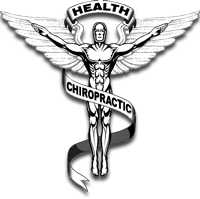Both conventional health care and alternative/holistic medicine diagnose and treat symptoms. But there are some important differences.
[space]Conventional Health Care: The Bottom Line
Due to the current climate of insurance policy and health care regulations, rather than taking the time to correctly diagnose a patient and create an appropriate treatment plan, many health care professionals today respond by increasing their rate of prescribing medications as a quick fix.
Public pharmaceutical marketing campaigns and the resulting perception of prescription drugs as a panacea for symptom relief only intensifies the situation. Patients themselves frequently request medications as a first-line of treatment. Physicians, also encouraged by prescription drug companies, all too often respond in kind by prescribing millions upon millions of pharmaceuticals each year, creating an ever-increasing cycle that primarily benefits the pharmaceutical companies.
Both patients and physicians pay a high cost for this “easy fix” mentality. Patients, prescribed medications they don’t necessarily need (while the underlying causes of their health concerns remain unaddressed), are often left to deal with unwanted side-effects, in addition to the worsening of existing conditions. Doctors may lose faith in their own profession as they begin to see their integrity, skills and talents eroded by policy and regulations and undermined by pharmaceutical companies’ pull towards profit.
There is another way: Welcome to Wholistic care.
[space]Wholistic Care: Whole-Body Healing
At our clinics, approach to diagnosis and treatment of TMJ/TMD is based on whole-body mechanics; hence, we refer to this approach as Wholistic Care.
The nervous system controls all functions in the body via a system of complex relationships and connections that continue to mystify modern science. Balancing the whole-body system, however, calms, sedates and supports balance within the nervous system. A balanced system is a more responsive, relaxed system with decreased muscle tension. This relaxed system reduces guarding patterns that result in a defensive state and inevitably create more tension, pain and dysfunction.
[space]
Sacro-Occipital Technique – S.O.T.
The fundamentals of Wholistic treatment are based on the principles of the Sacro-Occipital Technique (S.O.T.). “Sacro” refers to the sacrum or base of the spine, while “occipital” refers to the base of the skull and top of the spine. S.O.T. is a whole-body chiropractic technique based on the normalization or balancing of the Cranial-sacral system. SOT trains its practitioners to consider and integrate the entire patient in their diagnostic evaluation and treatment plan.
As most conditions, including the TMJ, may be affected by any imbalance in the body from the soles of the feet to the top of the head, a whole-body approach to diagnosis and treatment is critical. We are proud to offer top-of-the-line approaches for integrated health and wellness at all of our clinic locations. Experience whole-body health through Wholistic healing.
In Health and Happiness,
Dr. Richard Gerardo
D.C., C.S.C.P., D.A.C.B.N.
[space size=”big”] [space size=”big”]